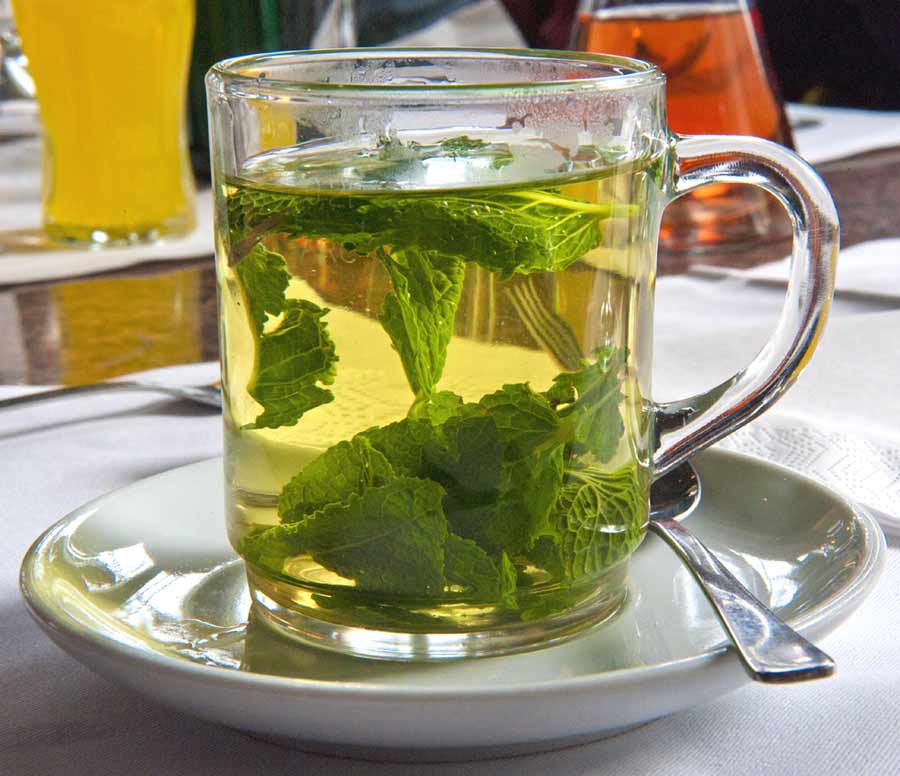What are some of the proven health benefits of drinking tea after a meal? In the enchanting realm of post-meal indulgence, the simple act of sipping tea undergoes a metamorphosis, transcending its status as a mere ritual to become a conduit for a myriad of proven health benefits. As we delve into the intricate nuances of this centuries-old tradition, a rich tapestry of advantages unfurls, elevating tea from a beverage to an elixir of well-being. The assertion that tea leaves are acidic and may affect the digestion process is indeed a valid consideration. Tea, particularly when consumed in excess, contains tannins and catechins, which are types of polyphenols. These compounds can potentially interfere with the absorption of certain nutrients and minerals, impacting the digestive process.
Acidic Nature of Tea and Protein Digestion
Tea’s acidity might pose challenges to the digestion of protein. The acid content in tea could potentially lead to the hardening of proteins in the stomach, making them less accessible to digestive enzymes. This interaction may hinder the breakdown of proteins into amino acids, the building blocks essential for absorption and utilization.
Iron Absorption Interference
One of the noteworthy concerns associated with consuming tea, especially post-meals, is its potential interference with iron absorption. Tea contains compounds like tannins that can bind to iron, forming insoluble complexes. This process may impede the absorption of non-heme iron (found in plant-based foods) by the body. For individuals with iron deficiency concerns, avoiding tea around mealtime might be advisable.
Temporal Guidelines for Tea Consumption
To mitigate these potential impacts on digestion and nutrient absorption, it is often recommended to avoid drinking tea one hour before and after meals. This temporal gap helps to minimize any potential interference with the digestive process, allowing the body to efficiently absorb nutrients from the meal.
22 Proven Health Benefits of Drinking Tea After A Meal
While tea offers numerous health benefits, including those mentioned previously, it is crucial to be mindful of its potential interactions with certain aspects of the digestive process. Adjusting the timing of tea consumption concerning meals can be a practical strategy to maximize its positive attributes while minimizing potential drawbacks. Individual responses to tea can vary, and consulting with a healthcare professional for personalized advice is always advisable.
1. Gastric Symphony: Easing Digestive Harmony
Embarking on a gastronomic journey that culminates in a satiating meal often demands a graceful denouement for the digestive system. In this delicate orchestration, tea emerges as an unsung hero, wielding its baton to conduct a symphony of gastric relief. Its impact, subtle yet profound, extends a soothing hand to the intricate processes of digestion, alleviating postprandial discomfort and paving the way for a harmonious equilibrium within the digestive milieu. With each sip, tea becomes a maestro, guiding the digestive ensemble to a melodious conclusion.
2. Glycemic Control: Taming the Sugar Surge
The delicate ballet of blood sugar levels post-meal unfolds as a nuanced dance, and within this intricate performance, tea emerges as a choreographer of unparalleled skill in taming the sugar surge. Studies illuminate the role of tea in the art of modulating glucose absorption, skillfully curbing abrupt spikes and ushering in a more gradual release. Beyond its soothing warmth, tea becomes a guardian of glycemic control, offering potential benefits for those navigating the complexities of insulin sensitivity. With each sip, tea becomes a maestro, orchestrating a symphony that harmonizes the undulating waves of post-meal glucose dynamics.
3. Metabolic Elevation: Igniting the Caloric Furnace
In the realm of metabolic orchestration, tea takes center stage as a subtle yet impactful stimulant, igniting the caloric furnace within. The interplay of bioactive compounds, a dynamic duet featuring caffeine and catechins, weaves a metabolic tapestry that encourages the body to expend energy with heightened efficiency. This nightly ritual becomes a catalyst for a subtle elevation in metabolic rate, potentially contributing to weight management endeavors. As the steam rises from the cup, it becomes not just a comforting beverage but a spark that kindles the metabolic flames, promoting a harmonious dance of caloric expenditure.
4. Stress Alleviation: A Tranquil Reprieve
In the aftermath of a sumptuous meal, when the body navigates the intricacies of digestion, tea emerges as a comforting reprieve—a tranquil interlude in the postprandial journey. The ritualistic act of sipping a warm brew transcends the sensory, delving into the profound realm of stress alleviation. Within the comforting embrace of tea lies the enchanting L-theanine, a compound that unfolds like a gentle lullaby, offering solace to both body and mind amidst the rigors of post-meal metabolic endeavors. With each sip, tea becomes not just a beverage but a meditative elixir, harmonizing the symphony of bodily processes with the soothing strains of stress relief.
5. Cognitive Elevation: Nourishing the Neurological Tapestry
Tea, with its diverse repertoire of cognitive nourishment, unravels a tapestry of benefits for the neurological realm. The intricate interplay between caffeine and L-theanine becomes the loom, weaving a cognitive elevation that fosters alertness without the jarring peaks and troughs associated with other stimulants. This nuanced modulation of brain function transforms the post-meal experience into a subtle yet impactful cognitive boost. As the steam rises from the cup, it becomes not just a comforting gesture but a sip into a cognitive sanctuary—a postprandial indulgence for the mind.
6. Oral Health Guardian: A Shield for Pearly Whites
Beyond the ephemeral encounter with taste buds, tea assumes a noble mantle as an oral health guardian. Its antimicrobial properties, coupled with the presence of fluoride, accentuate its role in safeguarding dental integrity. The post-meal ritual of tea consumption becomes a dual-purpose endeavor, leaving behind not only a lingering flavor but also a shield for pearly whites against potential microbial adversaries. With each sip, tea becomes a guardian, standing watch over the enamel fortress—a flavorful sentinel in the ongoing battle for oral health.
7. Mood Elevation: A Post-Meal Serotonin Surge
Tea, with its intricate influence on neurotransmitters, becomes a catalyst for a post-meal serotonin surge—a symphony that transcends the physiological to touch the realms of emotional well-being. The interplay between L-theanine and serotonin pathways unfolds a mood-elevating tableau. In the post-meal experience, tea becomes not just a comforting beverage but a subtle emotional uplift, a sip into serenity amidst the intricate dance of digestion. As the cup is raised post-meal, it becomes a vessel not just for warmth but for the delicate infusion of emotional resonance—a testament to tea’s role in nourishing both body and spirit.
8. Cardiovascular Vigilance: Nurturing Heart Health
The post-meal health saga gains a compelling chapter with the cardiovascular benefits woven by tea. Flavonoids, wielding their vasodilatory prowess, contribute to blood vessel flexibility, potentially mitigating the strain on the cardiovascular system. This nuanced support for heart health positions tea as a conscientious custodian, tending to the intricate balance of postprandial cardiovascular dynamics. As the cup is raised post-meal, it becomes not just a vessel for warmth but a gesture towards the nurturing of the vital rhythms within—a testament to tea’s multifaceted role in fostering cardiovascular well-being.
9. Anti-Inflammatory Symphony: Orchestrating Internal Harmony
In the intricate tapestry of post-meal physiology, the role of tea extends to orchestrating internal harmony through an anti-inflammatory symphony. Polyphenols within tea leaves navigate the labyrinth of inflammatory pathways, exhibiting a modulating influence on postprandial inflammation. This subtle yet profound anti-inflammatory ballet becomes a harmonious cadence, contributing to a state of internal equilibrium after indulging in a culinary masterpiece. With each sip, tea becomes not just a beverage but a conductor, guiding the body towards a post-meal serenity—a therapeutic encore in the symphony of well-being.

10. Immune Resilience: Fortifying the Body’s Bastions
In the quiet aftermath of a meal, tea dons the mantle of a silent sentinel, standing guard and fortifying the body’s immune bastions. Within the leaves of tea lies an arsenal of polyphenols and catechins, each exhibiting immunomodulatory properties. This post-meal immune resilience becomes a testament to the multifaceted benefits woven into the fabric of tea consumption. With each sip, tea becomes not just a beverage but a subtle yet significant boost to the intricate network of the immune system—a guardian in the silent postprandial battle against potential invaders.
11. Weight Management Ally: Nudging the Scales Gradually
In the intricate dance of weight management, tea emerges as a subtle yet impactful ally, weaving its influence through the labyrinth of metabolic pathways. The interplay of compounds within tea leaves, particularly the catechins, contributes to the modulation of adipose tissue. This nuanced influence on fat metabolism positions tea as a potential companion, gently nudging the scales towards equilibrium in the post-meal landscape of weight management. With each sip, tea becomes not just a beverage but a thoughtful partner in the journey towards sustainable post-meal weight balance—a sip into the subtle orchestration of metabolism.
12. Respiratory Soothing: A Breath of Post-Meal Freshness
As the aromatic tendrils of tea waft through the post-meal air, it becomes a breath of freshness for the respiratory system—a sensory reprieve after the crescendo of flavors from the meal. The steam, infused with herbal essences, unfolds as a soothing balm for the respiratory passages. In the post-meal experience, tea becomes not just a beverage but a breath of postprandial freshness—a sip into a realm where the sensory journey extends beyond taste, embracing the aromatic nuances that soothe and rejuvenate.
13. Hormonal Balance: Navigating Endocrine Equilibrium
Tea, with its nuanced influence on hormonal dynamics, delicately navigates the intricate balance of endocrine equilibrium post-meal. The compounds within tea, particularly polyphenols, unveil their modulatory effects on hormonal pathways, contributing to a subtle regulation of postprandial hormonal surges. This delicate dance of hormonal balance becomes a sophisticated layer in the post-meal physiological landscape—a sip into the intricacies of endocrine harmony.
14. Varietal Symphony: Exploring the Tapestry of Tea
Within the vast realm of tea, the post-meal experience unfolds as a journey through a varietal symphony—a symphony where each note is a different tea variant. From the robust crescendos of black tea to the subtle intricacies of green and the soothing harmonies of herbal infusions, each variant adds a layer of diversity to the post-meal tea-drinking ritual. This exploration of the tapestry of tea varieties becomes a sensory adventure, transforming the post-meal experience into a connoisseur’s delight—a sip into the rich diversity that tea culture offers.
15. Social Tapestry: Tea as a Communal Connector
The post-meal tea-drinking experience transcends the individual, weaving seamlessly into the social tapestry of communal connection. Whether shared with family, friends, or colleagues, the act of brewing and sipping tea becomes a bridge—an avenue for fostering conversation and camaraderie. This social tapestry enhances the post-meal experience, transforming it into a shared ritual of connection and conviviality. With each cup raised in the company of others, tea becomes not just a beverage but a vessel for shared moments and shared laughter—a sip into the warmth of human connection.
16. Cultural Reverence: Tea as a Culinary Tradition
In the grand tapestry of culinary traditions, the post-meal tea ritual emerges as a testament to cultural reverence. Across diverse cultures, tea assumes a position of honor—not merely as a beverage but as a cultural emblem, deeply embedded in heritage. The infusion of cultural nuances into the post-meal tea-drinking experience adds layers of meaning, transforming a simple act into a profound expression of tradition. With each sip, tea becomes not just a flavor but a sip into the rich heritage of culinary customs—a profound statement echoing the cultural legacy that is steeped in every cup.
17. Diuretic Efficacy: Balancing Fluid Dynamics
In the aftermath of a gastronomic journey, the diuretic efficacy of tea unfolds as a balancing act in fluid dynamics. While contributing to hydration, the diuretic properties gently coax the elimination of excess fluids. This post-meal diuretic dance orchestrates a delicate equilibrium, preventing fluid retention and fostering a sense of lightness after indulging in the symphony of flavors. With each sip, tea becomes not just a source of comfort but a subtle conductor in the fluidic ballet post-meal—a sip into the refined choreography of hydration.
18. Post-Meal Ritualistic Serenity: Tea as a Meditative Libation
Beyond its physiological impacts, tea after a meal transforms into a meditative libation—a moment of postprandial serenity. The ritualistic art of brewing and sipping tea becomes a bridge to tranquility, offering a mindful pause amidst the hustle and bustle of daily life. This post-meal ritualistic serenity becomes a testament to the holistic well-being woven into the cultural fabric of tea—a sip into the serene waters of meditative reflection after the culinary storm.
19. Enhanced Hydration Palate: Beyond Mundane Water
In the expansive realm of hydration, tea transcends the mundane, offering a nuanced and flavorful alternative to plain water. The diverse array of tea varieties, ranging from herbal infusions to the boldness of black and the subtlety of green teas, presents a palate of options to elevate the post-meal hydration experience. This enhanced hydration palate becomes a journey of taste exploration, quenching thirst while tantalizing the taste buds with a symphony of flavors. As the cup is raised post-meal, tea becomes not just a source of liquid nourishment but a sip into a world where hydration is an art—a post-meal indulgence that transcends the ordinary.
20. Detoxification Emissary: Cleansing the Physiological Canvas
In the aftermath of a gastronomic masterpiece, tea emerges as a detoxification emissary—a brush that delicately cleanses the physiological canvas. Its diuretic properties and the orchestration of liver enzymes become the tools for eliminating metabolic byproducts. This post-meal detoxification dance ensures that the body’s internal landscape remains pristine, free from the residues of indulgence. With each sip, tea becomes not just a beverage but a ritualistic cleansing—an elixir that purifies the internal tapestry, leaving behind a refreshed canvas ready for the next chapter of the physiological symphony.
21. Hydration Efficacy: Quenching the Post-Meal Thirst
Amidst the post-meal symphony of flavors, the role of tea as a hydrating maestro stands tall and must not be understated. The hydrating efficacy of tea, coupled with its nuanced flavor profiles, becomes a refreshing antidote to postprandial thirst. This dual functionality positions tea as a versatile companion, not only satiating the palate with its diverse flavors but also quenching the body’s innate need for replenishment. With each sip, tea becomes a sip of replenishment—a post-meal oasis that not only satisfies the senses but also fulfills the body’s inherent thirst for hydration.
22. Nutrient Synergy: Enhancing Absorption Dynamics
Tea, in its intricate interaction with nutrients, transforms into an orchestrator of enhanced absorption dynamics. Beyond its intrinsic nutritive value, the beverage unveils a modulating influence on the assimilation of essential minerals. This dance between the compounds within tea and the array of nutrients post-meal becomes a synergistic ballet, enhancing the body’s capacity to extract maximum nourishment from the culinary repertoire. With each sip, tea becomes a facilitator, enriching the post-meal experience not only in flavor but in the intricate absorption dance that amplifies the nutritional symphony of the body.
23. Antioxidant Prowess: A Shield Against Oxidative Onslaught
Tea, adorned with its polyphenolic arsenal, unravels as a formidable shield against the relentless onslaught of oxidative stress. Within the leaves, a clandestine army of flavonoids and catechins stands sentinel, engaging in a vigilant defense against free radicals that threaten cellular integrity. This antioxidant prowess transcends the act of sipping; it becomes a strategic fortification, not only bolstering the body’s defenses but also laying the foundational stones for a resilient cellular framework post-meal. As the cup is raised in the postprandial moments, it becomes a ritualistic gesture of protection—a shield against the invisible adversaries of oxidative imbalance.
24. A Call to Teatime: Embracing the Post-Meal Tradition
As the final act concludes in the gastronomic spectacle of a meal, the call to teatime resonates—an invitation to embrace the post-meal tradition. Beyond the myriad health benefits woven into the fabric of tea culture, this ritual transcends the physiological realm. It beckons individuals to partake in a symphony of flavors, cultural heritage, and holistic well-being—a sip into an experience that goes beyond the taste buds. Tea, Coffee, Energy Drinks, Juice, Beverage, Smoothie, and more
This call to teatime is more than an invitation to savor a beverage; it is a moment of postprandial serenity, a pause to appreciate the subtle nuances of diverse tea varieties. It extends beyond the individual, fostering connection and camaraderie—a shared sip that transforms the post-meal experience into a communal ritual. This is an invitation to immerse oneself in the rich tapestry of cultural continuity—a nod to the centuries-old tradition that elevates tea from a mere drink to a cultural emblem.
So, heed the call to teatime—an invitation to not just sip tea but to embrace a holistic post-meal experience. It’s a sip into serenity, a connection with others, and a continuation of cultural legacy—one cup at a time.
Other Interesting Articles
- 20 Benefits of Drinking Tea Before Breakfast, Side Effects
- 21 Honeysuckle Flower Tea Health Benefits, and Side Effects
- 22 Benefits of Drinking Hot Tea After A Meal, Side Effects
- 22 Lemon Tea Health Benefits, Nutrition, Recipes, Side Effects
- 20 Benefits of Drinking Tea with Milk and Sugar, Side Effects
- 19 Olive Leaf Tea Health Benefits, Nutrition, Recipes, Effects
- 15 Mint Tea Health Benefits, Nutrition, Recipes, Side Effects
- 20 Common Disadvantages and Side Effects of Drinking Tea
- 17 Pumpkin Spice Tea Health Benefits, Nutrition, Side Effects
- 21 Health Benefits of Drinking Tea with Milk without Sugar
- 17 Bush Tea Health Benefits, Nutrition, Recipes, Side Effects
- 20 Benefits of Drinking Tea in the Afternoon with Weight
- 14 Mamaki Tea Health Benefits, Nutrition, Recipes, Side Effects
- 20 Amazing Health Benefits of Drinking Tea in the Afternoon
- 12 Yerba Mate Tea Health Benefits, Nutrition, Side Effects
- 22 Benefits of Drinking Tea in the Evening with Cinnamon
- 16 Turmeric Tea Health Benefits, Nutrition, Side Effects
- 23 Health Benefits of Drinking Tea in the Evening with Ginger
- 14 Chrysanthemum Tea Health Benefits, Nutrition, Side Effects
- 20 Health Benefits of Drinking Tea in the Evening with Lemon




